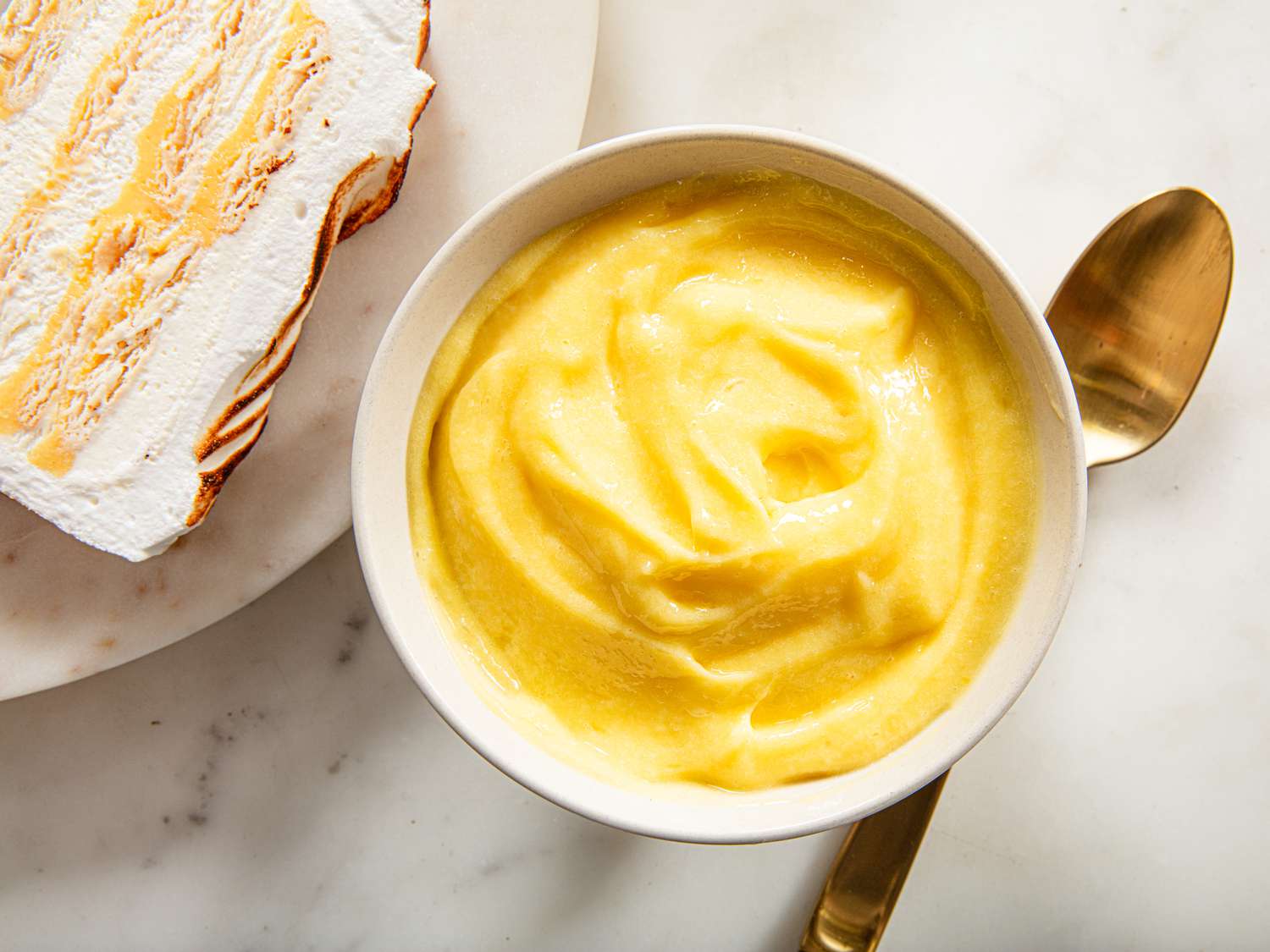
Why It Works
- Rubbing lemon zest with the sugar before cooking helps draw out its fragrant oils, resulting in a more flavorful curd.
- Tempering the eggs reduces the risk of them curdling as the curd cooks.
- Straining the curd after cooking results in a smooth, silky curd.
If you walk into my kitchen at 10 p.m. on any given evening, chances are you’ll find me at my kitchen counter eating spoonfuls of lemon curd straight out of the jar. Creamy, tart, and just sweet enough, it satisfies my desire for dessert when I don’t feel like cooking. And when I do feel like whipping up dessert, the condiment is just as handy. I use it to fill thumbprint cookies and tart shells, pour it on top of a buttery crust to make lemon bars, and dollop it onto crêpes, pancakes, and vanilla ice cream. Some mornings, I even swirl it into plain yogurt for breakfast. Beyond its deliciousness and versatility, lemon curd is also wonderful for how quickly and easily it comes together, as the recipe I’m sharing here proves.
Lemons “became a star of the dessert world in Europe after the mid-seventeenth century, when sugar became readily available at a reasonable cost,” according to Lemon: A Global History by Toby Sonneman. A popular way to enjoy lemons was in the form of a custard, which Sonneman says was eventually called a curd. Cooks filled cakes and pies with lemon curd, and diners enjoyed the condiment with their scones, crumpets, and toast, among other starchy delights.
A quick glance at recipes from centuries past reveals that there were many ways to prepare lemon curd. Some were closer to that of an actual curd: In Charles Carter’s 1730 The Complete Practical Cook, a recipe for lemon curd instructs readers to “chip two or three lemons” into a quart of cream or milk, let stand overnight, boil, “turn it with the juice of lemons,” then strain out the curd before incorporating sugar and orange-blossom water if so desired. Other recipes, like the one in Elizabeth David’s 1984 An Omelette and a Glass of Wine, recommend crumbling ladyfingers or ground almonds into the curd before cooking to help thicken the mixture.
Another interesting method appears in May Byron’s 1917 Puddings Book. Byron’s recipe is perhaps the simplest I’ve come across, and involves plopping butter, three egg yolks, lemon juice and zest, and sugar into a jar, sealing it, then cooking it in a saucepan of boiling water until thickened.
Most recipes today, however, are closer to that of a custard in which you cook lemon juice, eggs, sugar, and butter together—either directly in a saucepan or using a double boiler—until it’s lusciously thick. Some recipes are fussier than others, with some calling for blenders, a slow cooker, or even an electric mixer. You really don’t need all of those gadgets for a superb lemon curd, though—and with my tips below, you’ll be able to whip up a velvety lemon curd that has just the right balance of sweet and tart.
7 Tips for Making Better Lemon Curd
Use both lemon juice and zest. Lemon peels contain many flavorful oils, so using them together with lemon juice not only helps you use as much of the fruit as possible, but produces a curd with a more pronounced citrus flavor.
Toss your lemon zest with sugar. Quickly macerating the zest with sugar helps to draw out the rind’s oils, releasing their bright, citrusy flavor and aroma. It’s the same technique I use in my strawberry lemonade and how many cooks and bartenders prepare oleo-saccharum, a lemon syrup made by muddling fruit’s peels with sugar.
Use freshly squeezed lemon juice. It may be tempting to reach for bottled lemon juice—because, yes, a whole cup of fresh lemon juice is a lot to squeeze out by hand—but it’s absolutely worth using fresh lemons. So much of the curd’s flavor comes from the juice, and you’ll get the most vibrant flavor from fresh citrus.
Add a few yolks for richness. Some recipes for curd call for whole eggs, others call for just yolks, and yet others call for a combination of whole eggs and yolks. Because yolks are plentiful with fat, they yield a curd that’s both richer in flavor and texture. However, curds made with just yolks tend to be thicker and have a more pronounced egginess, but using a combination of whole eggs and yolks means you get a smooth curd that allows the flavor of the citrus to shine.
Whisk well. Some pastry chefs are staunchly against whisking curd, as they believe that whisking would aerate the curd too much. I haven’t found that to be true, and still swear by using a whisk, as it is a more efficient way to stir and reduces the risk of your eggs cooking too quickly and curdling your curd. Whisk slowly and frequently, and you won’t have to worry about lumps or accidentally aerating your lemon curd.
Cook over direct heat and strain after cooking. Many people swear by cooking their lemon curd in a double boiler, as they believe it prevents lumpy, overcooked curd, but I prefer to cook mine over direct heat because it’s more straightforward and, as long as you continue stirring and avoid cranking the heat, your curd will be just fine. And if a few small lumps of cooked egg do form, straining is an extra precaution that will guarantee two things: a silky smooth curd and peace of mind.
Don’t be afraid of the salt. As I often say, desserts need seasoning, too! A touch of salt brings everything together and highlights the nuances of the lemons, eggs, and butter. There will be no salty curd, I promise—just well-seasoned curd that tastes exactly as it’s supposed to: sweet, tangy, and delicious enough that you’ll want to eat it straight from the jar.

